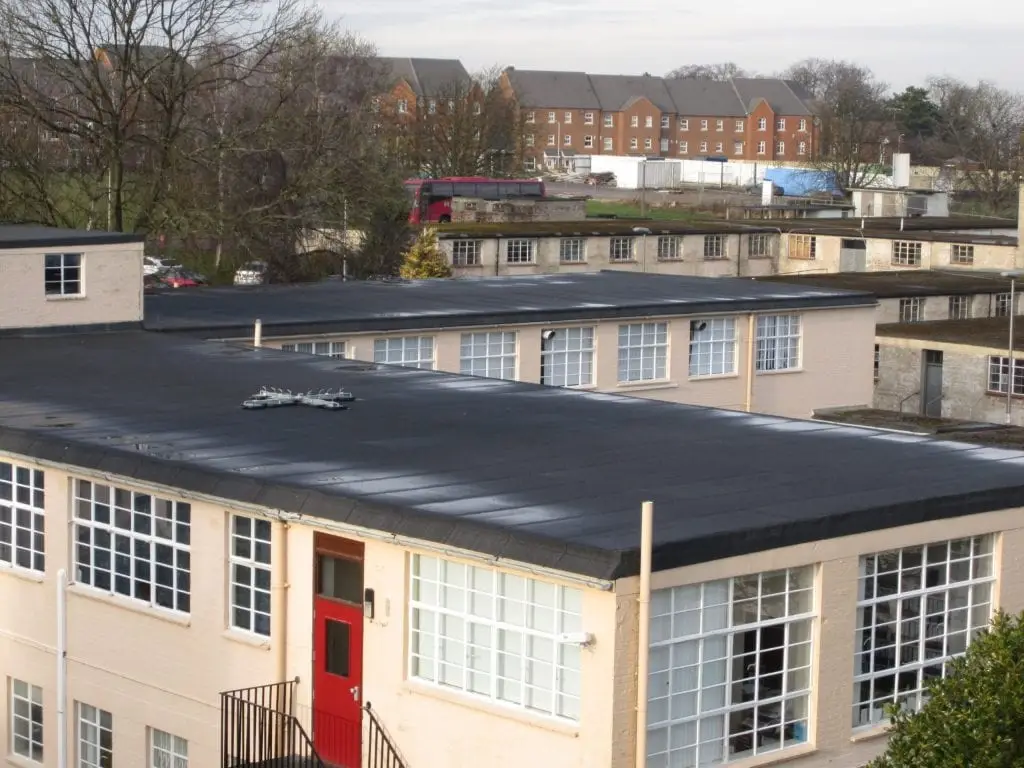Bletchley Park, Milton Keynes – IKO Ultra Prevent
Background
The historic Bletchley Park flat roof blocks A, B, and E required re-roofing and upgrading with insulation. The design brief was to de-chip and overlay the roofs, thus minimising disturbance to the substrate.
In addition, the inspection revealed the potential for the existing waterproofing to be asbestos based and was recommended that the client undertook testing prior to the commencement of the work.
The pitched roof huts on site, complete with a timber decked flat roof canopy, also needed to be re-roofed. The existing waterproofing to these huts had to be stripped to allow the timber deck to be checked so that damaged areas could be replaced.
Bletchley Park was Britain’s main decryption establishment during World War II. Ciphers and codes of several Axis countries were decrypted including, most importantly, those generated by the German Enigma and Lorenz machines.
It also housed Station X, a secret radio intercept station, and also a message sending station. The high-level intelligence produced at Bletchley Park, codenamed Ultra, provided crucial assistance to the Allied war effort.
A large portion of the site is now controlled by the Bletchley Park Trust. The National Museum of Computing, an independent voluntary organisation, rents space from the Trust to house its collection of historic computers.

The museum is run by the Codes and Ciphers Heritage Trust (an independent registered charity) and is open to the general public. As well as the history associated with the Bletchley Park site, the roofs replaced by Breyer in the contract presented a number of challenges.
Replacing the original traditional bitumen membranes, the flat roofs had to be re-roofed with high performance bitumen membranes to safeguard the integrity of the building fabric for many years to come.
The roofs also needed to be insulated, whilst complying with the strict planning restrictions and maintaining the look and feel of the original external appearance. External gutters positions could not be altered and the position/make-up of the original windows in any abutments could not be changed.
To accommodate the original gutter line, the formation of large, welted drips (stepped back in places) had to be used. There were also a number of difficult obstacles overcome relating to rooflight glazing, equipment on the roofs that had to be removed, and drainage.
The black slate surfaced membrane was chosen for the flat roofs to be as unobtrusive as possible and to match other roof areas on the site that had been re-roofed previously.
During the War, it was in Huts 3, 4, 6 and 8 that the highly effective Enigma decrypt teams worked. The huts operated in pairs and, for security reasons, were known only by their numbers.
A number of these original pitched roof huts were also re-roofed as part of the contract. These were again done with high performance membranes for long term performance but matching the look and feel of the original traditional bitumen membrane roofing.